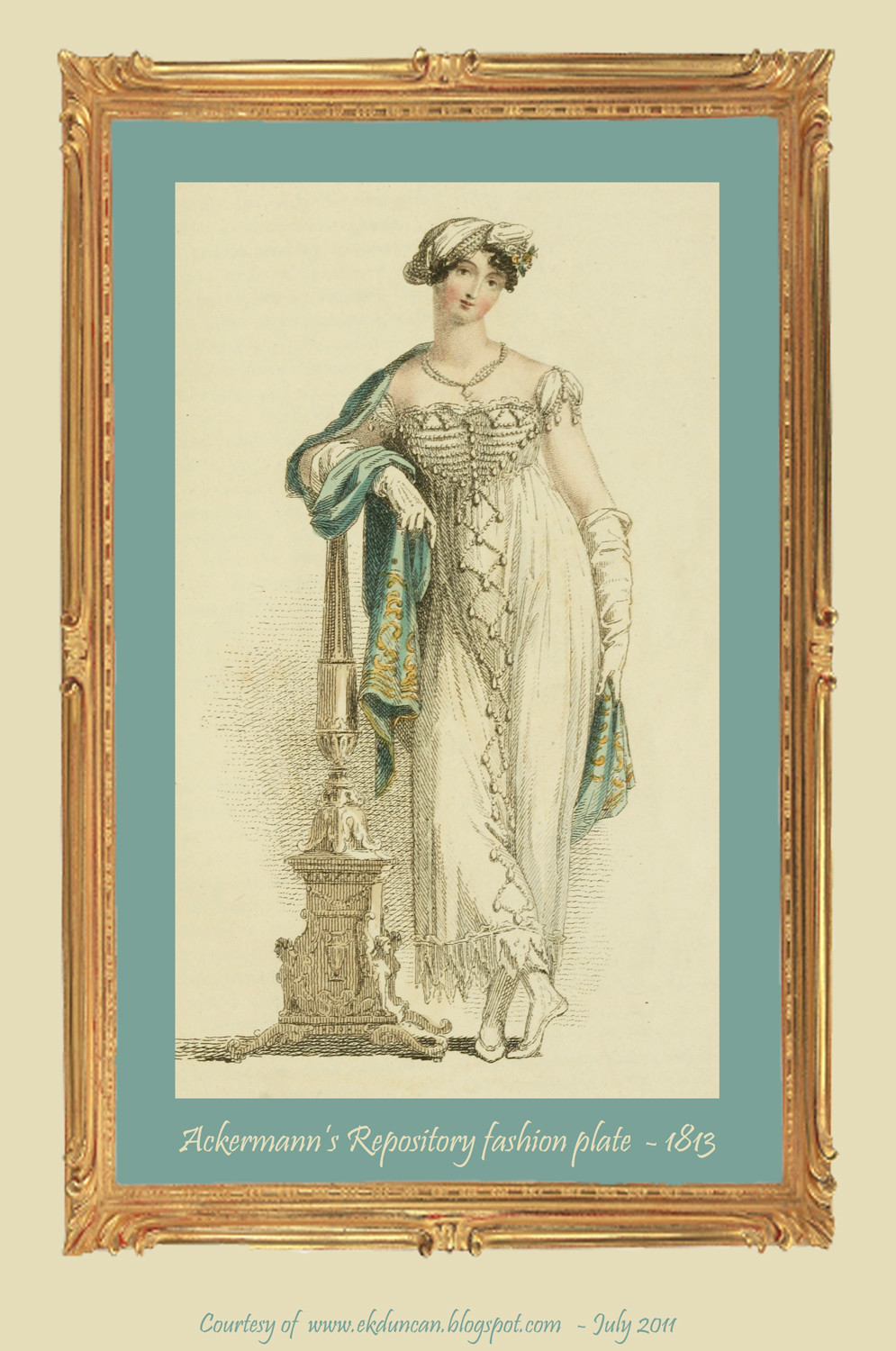Ackermann’s Repository of Arts, Literature, Commerce, Manufactures, Fashion and Politics was a prominent English publication from 1809 to 1829, offering a fascinating window into the Regency era. Among its most captivating features were the monthly fashion plates, meticulously illustrating the styles of the time. Each issue typically presented two new designs, accumulating to approximately 24 plates annually. These prints are invaluable resources for understanding Regency Era Fashion.
These magazines were not only published monthly but also available as beautifully bound volumes. These collected editions, typically spanning two volumes per year, are a treasure trove for fashion historians and enthusiasts alike. Series 1 of Ackermann’s Repository “Bound” series ran from 1809 to 1815, comprising 14 volumes in total. Today, we delve into the fashion plates specifically from the year 1813, offering a detailed look at the sartorial elegance of the period.
Let’s explore the fashion trends as depicted in Ackermann’s Repository from January 1813. The morning walking dress was a staple for daytime activities. These dresses combined practicality with elegance, suitable for promenades and social calls.
For evening events such as the opera, different attire was required. Opera dresses of the Regency era were designed to be both stylish and appropriate for indoor social gatherings, showcasing a heightened sense of fashion.
Moving into February 1813, Ackermann’s Repository continued to illustrate the evolving trends. Opera dresses remained a prominent feature, reflecting their importance in the social lives of the Regency elite.
Morning dresses also continued to be featured, highlighting the subtle variations in style and detail appropriate for different times of the day and social contexts.
By April, carriage dresses were presented, designed for travel and outings in carriages. These outfits needed to be both fashionable and practical for the slightly more exposed environment of a carriage ride.
Ball dresses, essential for formal evening occasions, were among the most elaborate and admired styles. These gowns epitomized Regency elegance and were often adorned with fine fabrics and intricate details.
Full dresses represented the height of formality, appropriate for the most significant social events. Ackermann’s Repository meticulously captured the nuances of these grand styles.
Evening dresses, while sometimes used interchangeably with opera dresses, generally referred to gowns for less formal evening gatherings. They still maintained a level of sophistication and style characteristic of the Regency era.
As the year progressed into October, evening dresses continued to evolve, reflecting seasonal changes and subtle shifts in fashion preferences within Regency society.
Reflecting on these 1813 fashion plates from Ackermann’s Repository offers a unique insight into a world where clothing was meticulously crafted and tailored. Unlike today’s ready-to-wear culture, Regency garments were custom-made, allowing individuals to select styles, fabrics, and embellishments that perfectly suited their tastes and figures. Every element of attire, from undergarments to outerwear, was personalized, showcasing the artistry and personal expression inherent in Regency era fashion. These historical illustrations not only document fashion but also provide a glimpse into the daily lives and social customs of 200 years ago.
